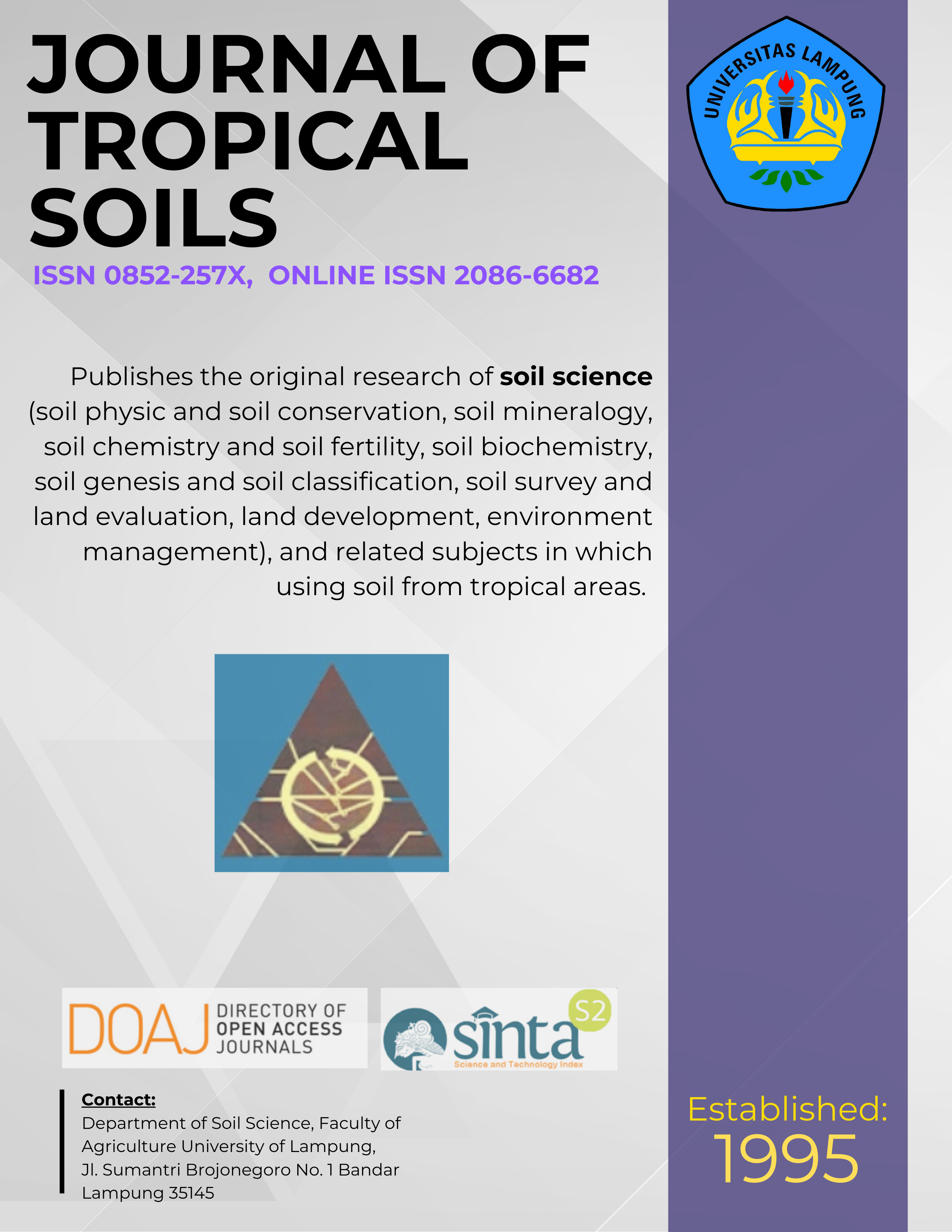Optimum Ratio of Fresh Manure and Grain Size of Phosphate Rock Mixture in a Formulated Compost for Organomineral NP Fertilizer
Main Article Content
Abstract
The objective of multi years study was to formulate an alternative organic based fertilizer by mixing a fresh manure
and phosphate rock with several different grain sizes conducted in the Field Experimental Station of the University
of Lampung. Both materials of the fresh manure and phosphate rock were obtained from local sources. Five levels
of mixture of fresh manure and phosphate rock, three levels of grain size of phosphate rock, and two kinds of
composting technique were factorial set up. The mixture materials were aerobically composted for 12 weeks. The
results of the first year study show that (a) the optimum ratio of the mixture of fresh manure and phosphate rock was
80% to 20% with the optimum of grain size of phosphate rock < 3 mm; (b) 6-8 weeks of incubation of the mixture
materials has been optimally composted under aerobic conditions of the complete mixture of batch composted
technique; (c) the quality of the final produced compost was considered to fulfill the requirement of standard criteria
of organic fertilizer; while (d) the quantity of compost recovered up to 75.07% which was a reliable quantity of mass
production of organic fertilizer.
[How to Cite: Nugroho SG, Dermiyati, J Lumbanraja, S Triyono, H Ismono, YT Sari and E Ayuandari. 2012. Optimum Ratio of Fresh Manure and Grain Size of Phosphate Rock Mixture in a Formulated Compost for Organomineral NP Fertilizer. J Trop Soils 17 (2) : 121-128. Doi: 10.5400/jts.2012.17.2.121]
[Permalink/DOI: www.dx.doi.org/10.5400/jts.2012.17.2.121]
Downloads
Article Details
Issue
Section
License for Authors
Authors who publish with this journal agree to the following terms:
- Authors retain copyright and grant the journal right of first publication with the work simultaneously licensed under a Creative Commons Attribution License that allows others to share the work with an acknowledgement of the work's authorship and initial publication in this journal.
- Authors are able to enter into separate, additional contractual arrangements for the non-exclusive distribution of the journal's published version of the work (e.g., post it to an institutional repository or publish it in a book), with an acknowledgement of its initial publication in this journal.
- Authors are permitted and encouraged to post their work online (e.g., in institutional repositories or on their website) prior to and during the submission process, as it can lead to productive exchanges, as well as earlier and greater citation of published work (See The Effect of Open Access).
License for Regular Users
Other regular users who want to cite, distribute, remix, tweak, and build upon author’s works, even for commercial purposes, should acknowledge the work’s authorship and initial publication in this journal, licensed under a Creative Commons Attribution License.

